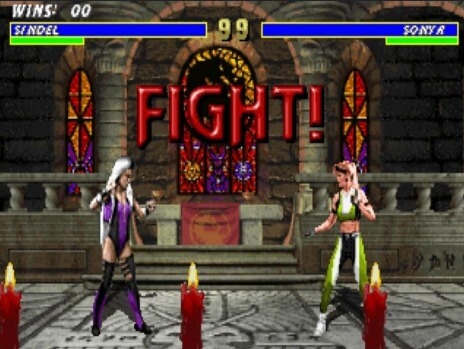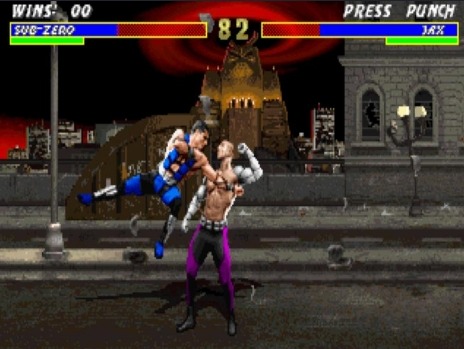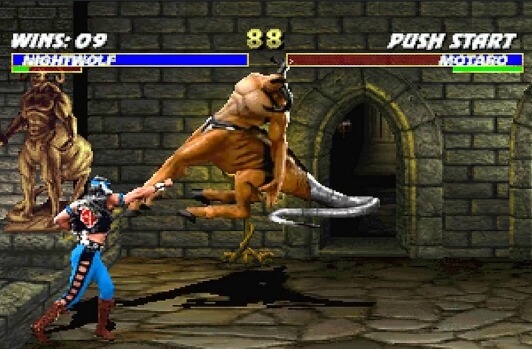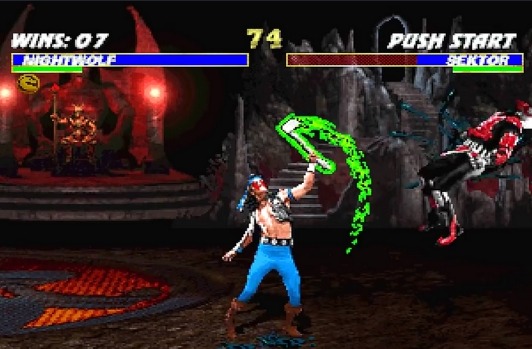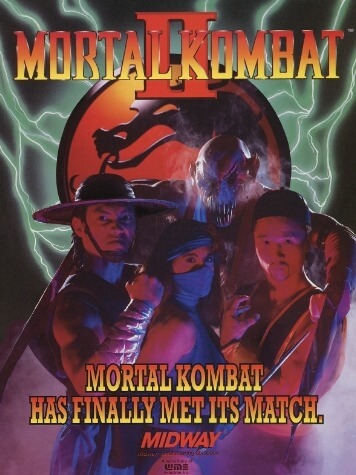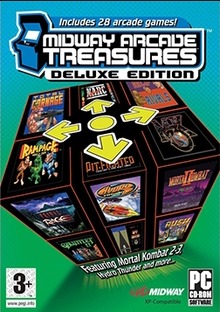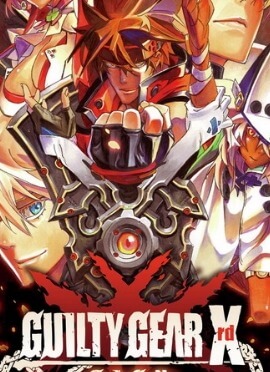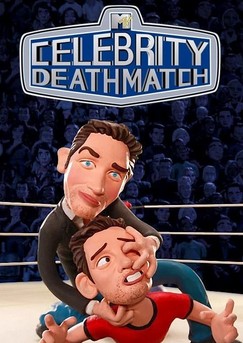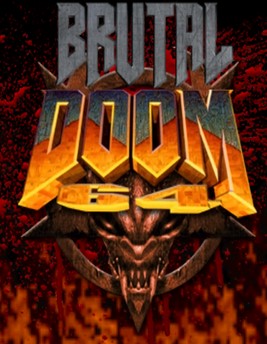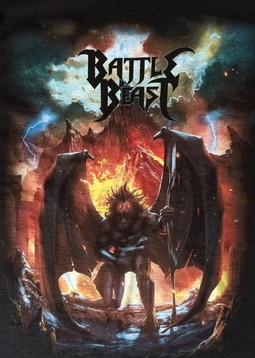"Chain combos", also known as pre-programmed combos (labeled "dial-a-combos") were also introduced. Chain combos are button sequences that cannot be interrupted once one hit connects; some chain combos end with an uppercut or another move that knocks the opponent into the air so that more damage can be dealt via a traditional juggle combo. To please players of various skill levels, a "Choose Your Destiny" screen appears in the single-player mode to allow player-selectable difficulty.
For the first time, certain levels were interactive by allowing characters to uppercut each other through the ceiling where both characters would continue the battle in a different stage. This could alter the game's level cycle. Both normal uppercuts and uppercuts that are part of a ground combo would result in a level change. Kung Lao's "Whirl Wind Spin" move would also have the same effect. However, if the character is defeated by an uppercut, there is no level change.
All of the different styles of finishing moves featured in Mortal Kombat II (Fatalities, including the non-lethal Babality and Friendship moves) return in MK3. Additionally, the rumored Animality, where the character transforms into an animal in order to kill their opponent, is featured for the first time. Another new addition is the Mercy, where the character can give their opponent a small sliver of life if they have won two rounds and are at the "Finish Him/Her" screen. A Mercy is necessary for an Animality to occur. Finally, three new Stage Fatalities can be performed in the Subway, the Bell Tower and the Pit 3.
Another concept introduced in this game is the "Kombat Kode". A Kombat Kode is a six-symbol code entered at the VS screen in a two-player game to modify gameplay, fight hidden characters or display certain text messages. Also introduced in this game was the "Ultimate Kombat Kode", a 10-character code using symbols, that could be entered on the game over screen after the continue screen disappears in single player mode. It was used to unlock a robotic version of the character Smoke; it can be done by either the player or the arcade operator. The arcade owner could reset this code by accessing the game's diagnostic menu by resetting to the factory settings within the MK3 cabinet (except in version 2.1, which can only be done by accessing the EJB menu). The codes were revealed through gaming magazines, promotional material, and other Mortal Kombat media.
Characters
The game includes 14 playable characters, with 1 additional secret character.
New player characters:
Cyrax (Sal Divita) - Yellow-colored Lin Kuei cyber assassin, and second of the three cyber assassins.
Kabal (Richard Divizio) - Former Black Dragon warrior.
Nightwolf (Sal Divita) - Native American shaman.
Sektor (Sal Divita) - Red-colored Lin Kuei cyber assassin and also the first of the three cyborgs.
Sindel (Lia Montelongo) - Resurrected Queen of Edenia who is being controlled by Shao Kahn. Sindel was originally named Mushasha in the early versions of the game.
Sheeva (stop motion) - Female Shokan whose loyalty lies in the hands of Shao Kahn, and is also the protector of Sindel.
Stryker (Michael O'Brien) - Riot control officer.
Returning player characters:
Jax (John Parrish) - Special Forces major who works with Sonya to apprehend Kano.
Kano (Richard Divizio) - Black Dragon thug who escaped arrest by Sonya and Jax.
Kung Lao (Tony Marquez) - Shaolin monk who seeks to stop what Kahn is planning.
Liu Kang (Eddie Wong) - Returning Mortal Kombat champion.
Sonya Blade (Kerri Hoskins) - Special Forces lieutenant setting out again to capture Kano.
Sub-Zero (John Turk) - Rogue Lin Kuei ninja who fled the clan after refusing to be converted to a cybernetic unit.
Shang Tsung (John Turk) - Shao Kahn's devious sorcerer.
Smoke (Sal Divita) - Indigo-colored cyber assassin from the Lin Kuei and last of the three cyborgs, who was once a close friend of Sub-Zero (unlocked by the Ultimate Kombat Kode).
Boss characters:
Motaro (stop-motion) - A Centaur and the game's sub-boss.
Shao Kahn (Brian Glynn, voiced by Steve Ritchie) - Emperor of Outworld and the game's final boss.
Although the game's manual states both boss characters are unplayable, both Motaro and Shao Kahn can be enabled via secret cheat menus in the SNES and Genesis versions of the game. Noob Saibot (Richard Divizio) also returns as a hidden opponent.
Plot
Weary of continuous losses in tournament battle, Shao Kahn, who lost to Liu Kang in the Outworld tournament in the previous game, enacts a 10,000-year-old plan. He would have his Shadow Priests, led by Shang Tsung, revive his former Queen Sindel, who unexpectedly died at a young age. However, she would not be revived in the Outworld, but in Earthrealm. This would allow Shao Kahn to cross the boundary lines and reclaim his queen. When Sindel is reincarnated in Earthrealm, Shao Kahn reaches across the dimensions to reclaim her, and as a result, Earthrealm gradually becomes a part of Outworld, instantly stripping billions of their souls. Only a few are spared, as Raiden protects their souls. He tells them that Shao Kahn must be stopped, but he cannot interfere; due to his status, he has no power in Outworld, and Earthrealm is partially merged with Outworld. Shao Kahn has unleashed extermination squads to kill any Earthrealm survivors. Also, Raiden's protection only extends to the soul, not to the body, so his chosen warriors have to fight the extermination squads and repel Shao Kahn. With his final defeat, every human on Earthrealm is restored.
Mortal Kombat 3 follows Mortal Kombat II and shares continuity with both Ultimate Mortal Kombat 3 and Mortal Kombat Trilogy which were both updates of this game. The next new chapter in the series was Mortal Kombat 4.
Reception
Mortal Kombat 3 was one of three 1995 recipients of the American Amusement Machine Association's Diamond Awards (which are based strictly on sales achievements). Williams Entertainment, which published the Super NES and Genesis versions, reported combined sales of 250,000 copies in the first weekend they were available, placing them among the best-selling games of 1995. Mortal Kombat 3 was nominated for the Video Software Dealers Association's "Video Game of the Year" for 1995, losing to Donkey Kong Country 2.
Although Mortal Kombat 3 was commercially successful, many disliked the inclusion of arguably less-appealing new characters (especially Stryker) in place of established stalwarts such as Scorpion and Kitana. The new combo system was also often criticized, as were, to a lesser degree, the run mechanics and some finishing moves. According to PC Gamer in 1998, "While Mortal Kombat 2 managed to improve upon the fast-paced, gore-galore formula of the original, the third incarnation didn't fare nearly as well. MK3 suffered from monkeywrenched gameplay, needlessly stupid finishing moves like 'Animalities,' and unbearably campy character designs." Next Generation reviewed the arcade version of the game, and stated that "in an industry which depends on innovation to keep it fresh and interesting, MK III just doesn't deliver." A Retro Gamer article on the history of the series stated in 2007: "Although many hardcore fans will decree Midway's third Mortal Kombat game to be the best in the series, just as many felt it was beginning of the end for the still massively popular franchise ... While Midway had been constantly adding subtle gameplay tweaks to its franchise since the release of Mortal Kombat, its once exciting series was suddenly looking rather tired."
Nevertheless, the game received largely positive reviews at the time. As of 2014, the review aggregator website GameRankings is giving it the averaged scores of 80.23% for the Super NES, 76.67% for the Genesis, and 70.33% for the Sony PlayStation. Electronic Gaming Monthly (EGM) gave the PlayStation version their "Game of the Month" award. EGM and IGN both criticized the heavy lag during Shang Tsung's morphing while assessing the conversion overall as a near-perfect replication of the graphics, content, and controls of the arcade original. However, IGN gave it a negative assessment based on the shortcomings of Mortal Kombat 3 itself, recommending Street Fighter 2D fighting games over it unless one is a "die-hard MK fan". According to a later IGN retrospective, "Despite the evolutions in gameplay, Mortal Kombat 3 was simply not met with same kind of enthusiasm as its predecessor. While the new 'cyber-ninja' characters were popular, the loss of so many favorites from the roster left many players feeling left out. A new Mortal Kombat was impossible to ignore, but the response wasn't quite what Midway had hoped for."






